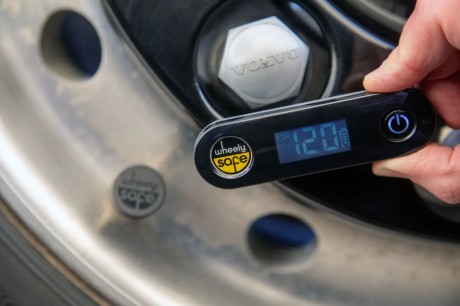GSR2: FAQs for N and O Vehicle Classifications
Effective from 2019 (and replacing the earlier EU 661/2009 issue), the GSR2 regulations (EU 2019/2144) bring a wave of changes over different dates periods to safety systems and vehicle classifications, impacting a variety of vehicles including HGVs (categories N and O). This update prioritizes road safety by introducing stricter technical requirements and advanced driver assistance systems for these vehicles.
Understanding GSR2 for N and O:
- Enhanced Safety Features: GSR2 mandates or encourages several safety features for N and O vehicles, ranging from collision prevention to driver behaviour monitoring.
- Cost Considerations: While implementing new features may initially increase vehicle purchase and maintenance costs, long-term savings are expected through reduced accident rates and insurance premiums.
Key GSR2 Bodywork & Safety Safety Features for N and O Classification Vehicles:
The following table does not include those items already in force from 6th July 2022 (A).
| Feature | Regulation | N2 (3.5-12T) | N3 (>12T) | O3 (3.5-10T) | O4 (>10T) | Notes |
|---|---|---|---|---|---|---|
| Pedestrian and cyclist collision warning | UN Reg 159 | B | B | Detects and warns drivers of potential collisions with pedestrians and cyclists. Including MOIS (Moving Off Information System) | ||
| Blind Spot Information System (BLIS) | UN Reg 151 | B | B | Alerts drivers to vehicles in blind spots. | ||
| Reversing Detection | UN Reg 158 | B | B | Cameras or sensors for improved visibility during reversing. | ||
| Heavy Duty Vehicles Direct Vision | D | D | ||||
| Tyre Pressure Monitoring (TPMS) | UN Reg 141 | B | B | B | B | Alerts drivers to underinflated tires, improving fuel efficiency and road safety. |
| Protection of vehicle against cyberattacks | UN Reg 155 | B | B | Protection agains unauthorised use. | ||
| Intelligent Speed assist (ISA) | 2021/1958 | B | B | Provides feedback and warnings if speeding. | ||
| Emergency Stop Signal | UN Reg 48 | B | B | Flashing brake lights to warn following vehicles of heavy braking. | ||
| Alcohol interlock installation facilitation | 2021/1243 | B | B | A standardised interface that facilitates the fitting of aftermarket alcohol interlock devices. | ||
| Driver drowsiness and attention warning | 2021/1341 | B | B | Detects driver drowsiness and distraction, prompting alerts and potentially intervening. | ||
| Advanced driver distraction warning | 2021/1341 | C | C | A system that helps the driver to continue to pay attention to the traffic situation and that warns the driver when they are distracted. | ||
| Event Data Recorders (EDRs) | 2022/545 UN Reg 160 | D | D | Records data in crashes for investigation and safety improvement. | ||
| Platooning | B(1) | B(1) | Linking of two or more vehicles in a convoy using connectivity technology and automated driving support systems which allow the vehicles to maintain automatically a set, close distance between each other when connected for certain parts of a journey and to adapt to changes in the movement of the lead vehicle with little to no action from the drivers. | |||
| Driver availability monitoring system | UN Reg 157 | B(5) | B(5) | Systems to assess whether the driver is in a position to take over the driving function from an automated vehicle in particular situations, where appropriate | ||
| Systems to replace driver’s control | UN Reg 157 | B(5) | B(5) | Including signalling, steering, accelerating and braking. | ||
| Systems to provide the vehicle with information on state of vehicle and surrounding area | UN Reg 157 | B(5) | B(5) | |||
| Systems to provide safety information to other road users | B(5) | B(5) |
Dates of Enforcement
A: 6th July 2022
B: 7th July 2024
C: 7th July 2026
D: 7th January 2029
Notes
(1) Compliance is required if fitted.
(5) Compliance is required in case of automated vehicles.
Remember, this information is for general understanding. For specific guidance on your vehicle and applicable regulations, consulting relevant authorities or industry experts is recommended.
By embracing GSR2 regulations and adopting its advanced safety features, N and O vehicle operators can significantly contribute to a safer and more sustainable transportation ecosystem.
At the time of publication, EU 2019/2144 is in force and applicable for EU Whole Vehicle Type Approval (WVTA). As Great Britain has exited the European Union and as these newer regulations came into force after Brexit, these items are not yet mandated for GB Type Approval under the NSSTA and IVA Schemes. It is possible that the DfT may opt to include one or more of the additional GSR2 features in the future to align with the EU regulations.
Due to the Northern Ireland protocol, vehicles that come under Northern Ireland Type Approval must include the EU GSR2 features.
We’d love to hear from you – get in touch today!






